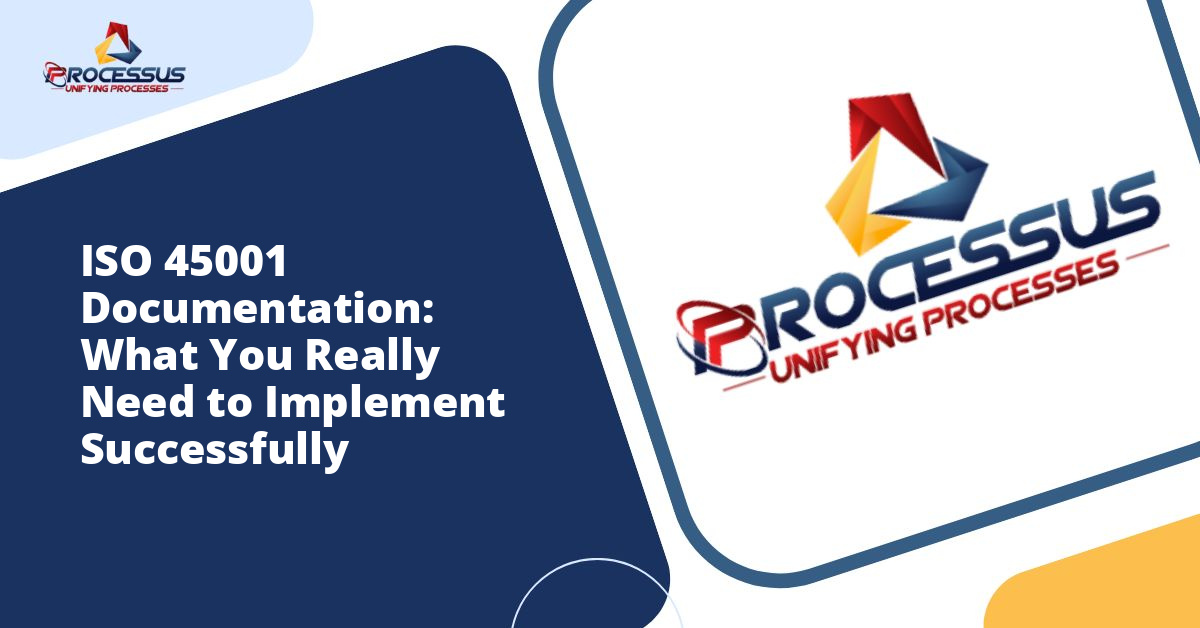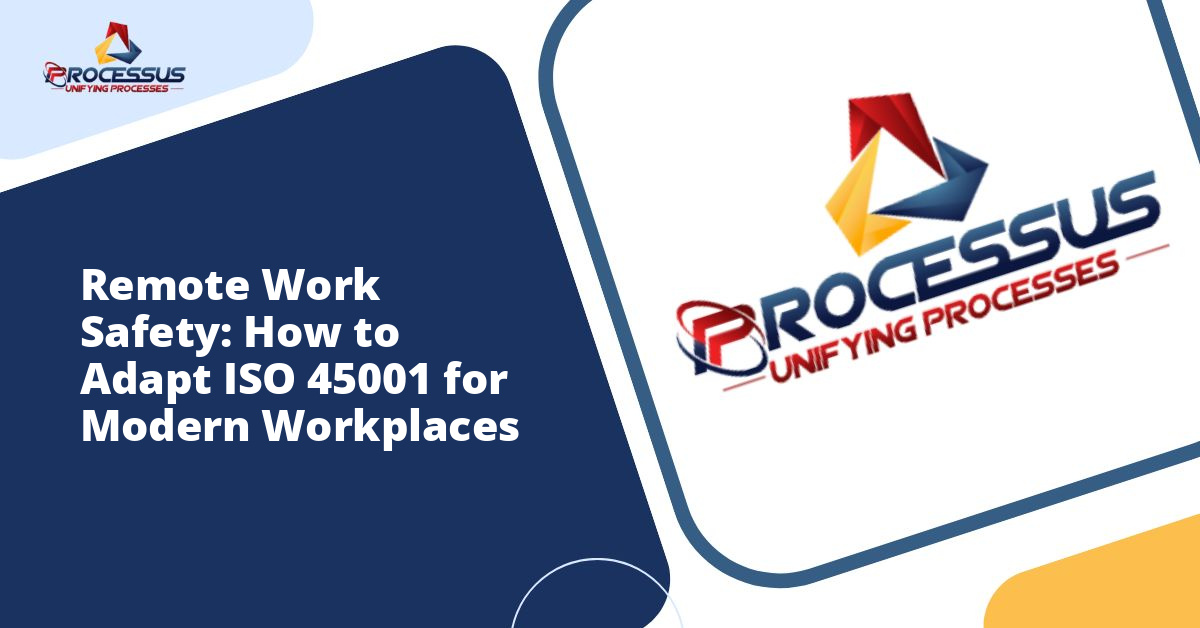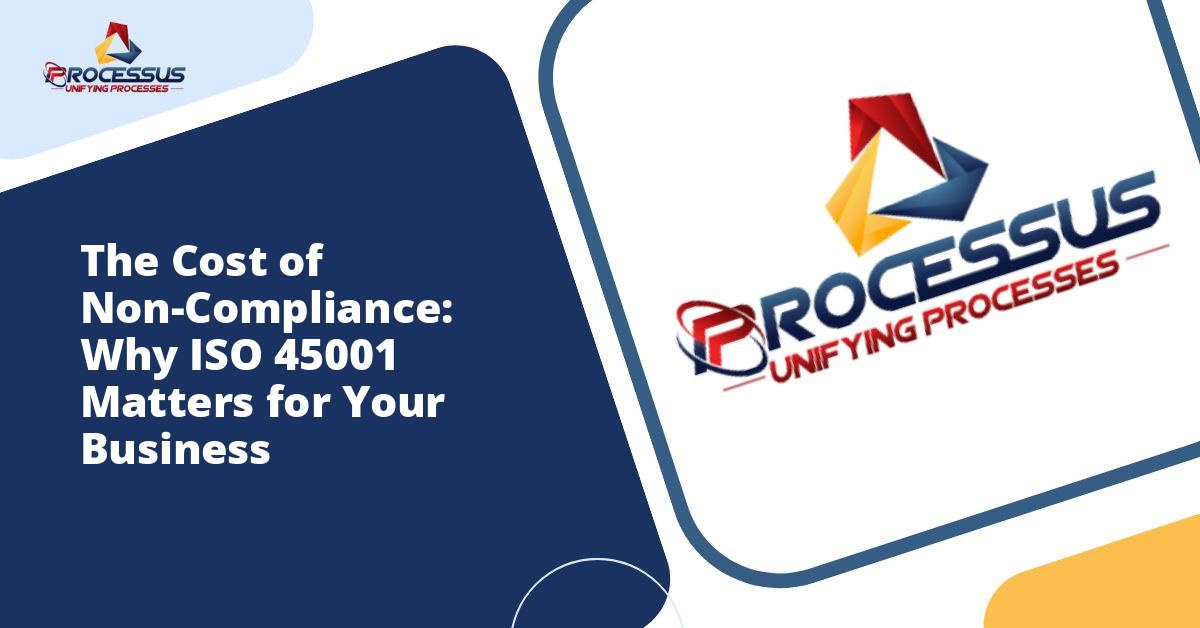Workplace safety has evolved from a compliance checkbox to a strategic business priority. Organizations worldwide are recognizing that protecting their workforce goes beyond meeting minimum regulatory requirements. It requires embedding safety into the very fabric of organizational culture. ISO 45001, the international standard for occupational health and safety management systems, provides a robust framework for achieving this transformation.
This comprehensive guide explores how implementing ISO 45001 can help organizations build a sustainable safety culture that protects employees, enhances productivity, and drives long-term business success. You might also enjoy reading about How ISO 45001 Reduces Workplace Accidents in Manufacturing: A Complete Guide.
Understanding ISO 45001 and Its Significance
ISO 45001:2018 represents the first global standard for occupational health and safety management systems. Published in March 2018, it replaced the previous OHSAS 18001 standard and brought workplace safety management into alignment with other ISO management system standards like ISO 9001 (quality) and ISO 14001 (environmental management). You might also enjoy reading about Top 10 Common Non-Conformities in ISO 45001 Audits: A Comprehensive Guide for Organizations.
The standard provides a systematic framework for managing occupational health and safety risks and opportunities. More importantly, it emphasizes the critical role of organizational culture in achieving sustained safety performance. Unlike prescriptive regulations that tell organizations what to do, ISO 45001 focuses on what organizations need to achieve, allowing flexibility in implementation approaches. You might also enjoy reading about The ROI of Implementing ISO 45001 in Your Organisation: A Complete Guide to Measuring Value and Impact.
The Core Principles of ISO 45001
The standard is built on several fundamental principles that support the development of a positive safety culture:
- Leadership and worker participation: Top management must demonstrate visible commitment while actively involving workers at all levels in safety decision-making.
- Risk-based thinking: Organizations must proactively identify hazards and assess risks before incidents occur.
- Process approach: Safety management should be integrated into business processes rather than treated as a separate function.
- Continuous improvement: Organizations must consistently enhance their safety performance through learning and adaptation.
- Evidence-based decision making: Decisions should be based on data analysis and measurable information.
What is Safety Culture and Why Does It Matter
Safety culture refers to the shared values, beliefs, attitudes, and behaviors regarding workplace safety within an organization. It represents how safety is perceived, valued, and prioritized when no one is watching. A strong safety culture means that safe practices are not just followed because of rules or supervision but because they are ingrained in how work gets done.
Organizations with robust safety cultures experience fewer workplace incidents, lower insurance costs, reduced absenteeism, higher employee morale, and improved operational efficiency. Research consistently shows that cultural factors play a more significant role in preventing workplace incidents than technical controls alone.
However, building such a culture requires more than implementing safety programs or conducting training sessions. It demands a fundamental shift in organizational mindset, starting from the leadership level and permeating through every layer of the organization.
How ISO 45001 Facilitates Safety Culture Development
ISO 45001 is uniquely positioned to drive cultural transformation because it addresses both the structural and behavioral aspects of safety management. Here is how the standard supports safety culture development:
Leadership Commitment and Accountability
The standard places explicit responsibility on top management to demonstrate leadership and commitment to the occupational health and safety management system. This goes beyond simply approving policies or allocating resources. Leaders must actively participate in safety initiatives, communicate the importance of effective safety management, and ensure that safety objectives align with business strategy.
When employees see their leaders prioritizing safety in decision-making, attending safety meetings, and responding seriously to safety concerns, it sends a powerful message about organizational values. This visible commitment from the top creates a cascade effect throughout the organization, influencing attitudes and behaviors at all levels.
Worker Participation and Consultation
One of the distinguishing features of ISO 45001 is its strong emphasis on worker participation. The standard requires organizations to establish processes for consulting with workers on safety matters and to remove barriers to participation. This includes involving workers in hazard identification, risk assessment, incident investigation, and development of safety policies.
This participative approach recognizes that frontline workers often have the most practical knowledge about workplace hazards and the effectiveness of control measures. By giving workers a voice in safety decisions, organizations tap into valuable insights while simultaneously building ownership and commitment to safety outcomes.
Integration with Business Processes
ISO 45001 requires safety management to be integrated into overall business management processes rather than operating as a standalone system. This integration ensures that safety considerations are embedded in strategic planning, procurement decisions, contractor management, and change processes.
When safety becomes part of how business is conducted rather than an add-on activity, it reinforces the message that safety is a core organizational value. This integration helps prevent situations where safety concerns are overridden by production pressures or cost considerations.
Risk-Based Approach
The standard’s emphasis on proactive risk management encourages organizations to anticipate and address potential hazards before they cause harm. This forward-looking approach contrasts with reactive safety management that focuses primarily on responding to incidents after they occur.
By systematically identifying hazards, assessing risks, and implementing controls, organizations demonstrate a genuine commitment to protecting workers. This proactive stance builds employee confidence in management’s dedication to their wellbeing, which is fundamental to a positive safety culture.
Practical Steps for Implementing ISO 45001 to Build Safety Culture
Successfully implementing ISO 45001 in a way that genuinely transforms safety culture requires careful planning and execution. Here are the key steps organizations should follow:
1. Secure Leadership Buy-In and Commitment
Before embarking on ISO 45001 implementation, ensure that top management fully understands and commits to the initiative. This includes allocating adequate resources, dedicating time to safety activities, and being willing to challenge existing practices that may undermine safety.
Leadership development programs should include safety leadership training to help managers understand their role in shaping culture. Leaders need skills in safety communication, behavioral observation, and responding effectively to safety concerns and incidents.
2. Assess Your Current Safety Culture
Understanding your starting point is essential. Conduct a comprehensive safety culture assessment using surveys, interviews, focus groups, and behavioral observations. This assessment should evaluate current attitudes toward safety, communication patterns, reporting behaviors, and the perceived priority of safety relative to other business objectives.
The insights gained from this assessment will help identify cultural strengths to build upon and weaknesses that need attention. It also provides baseline data for measuring cultural change over time.
3. Define Your Safety Vision and Objectives
Articulate a clear vision for what safety culture should look like in your organization. This vision should be inspiring, realistic, and aligned with overall business strategy. From this vision, develop specific, measurable safety objectives that will drive progress.
Ensure that these objectives address both leading indicators (proactive measures like safety training completion and hazard reports submitted) and lagging indicators (incident rates and severity). Leading indicators are particularly valuable for culture development as they measure activities that prevent incidents rather than just counting failures.
4. Develop Comprehensive Policies and Procedures
Create or update your occupational health and safety policy to reflect ISO 45001 requirements and your cultural aspirations. The policy should clearly state organizational commitment to providing safe working conditions, eliminating hazards, reducing risks, and continuously improving safety performance.
Develop supporting procedures that operationalize this policy across key areas such as hazard identification, risk assessment, incident investigation, emergency preparedness, and management of change. Ensure these procedures are practical, accessible, and written in clear language that workers can understand.
5. Establish Worker Participation Mechanisms
Design and implement effective mechanisms for worker participation and consultation. This might include safety committees with representation from different areas and levels, regular safety meetings, suggestion systems, and involvement in risk assessments and incident investigations.
Make sure these mechanisms have real influence on safety decisions rather than being purely symbolic. Workers are more likely to engage when they see their input leads to meaningful action.
6. Implement Risk Assessment Processes
Establish systematic processes for identifying workplace hazards and assessing associated risks. Train competent personnel to conduct risk assessments and involve workers in the process to leverage their practical knowledge.
Use the hierarchy of controls principle when selecting risk control measures, preferring elimination and engineering controls over administrative controls and personal protective equipment. Document risk assessments and communicate findings and control measures to affected workers.
7. Develop Communication and Awareness Programs
Effective communication is essential for building safety culture. Establish channels for both top-down and bottom-up safety communication. Leaders should regularly communicate about safety priorities, performance, and lessons learned. Workers need easy ways to report hazards, near misses, and concerns without fear of reprisal.
Implement awareness programs that go beyond traditional training. Use storytelling, visual management, safety conversations, and recognition programs to keep safety visible and valued throughout the organization.
8. Provide Competency-Based Training
Ensure that all workers receive appropriate training to perform their work safely. This includes general safety orientation, job-specific training, and specialized training for those with particular safety responsibilities.
Training should be competency-based, meaning workers must demonstrate understanding and ability rather than simply attending sessions. Regular refresher training helps maintain competency and reinforces safety messages.
9. Establish Measurement and Monitoring Systems
Implement systems to monitor safety performance and measure the effectiveness of controls. This includes tracking leading and lagging indicators, conducting safety inspections and audits, and monitoring compliance with legal requirements and internal standards.
Use this data to identify trends, recognize improvements, and detect areas needing attention. Make safety performance information visible throughout the organization to maintain awareness and accountability.
10. Conduct Management Reviews
Schedule regular management reviews where top management evaluates the performance of the occupational health and safety management system. These reviews should consider incident data, audit findings, changes in external and internal issues, opportunities for improvement, and resource adequacy.
Decisions and actions from management reviews should be documented and communicated, demonstrating that safety performance receives serious attention at the highest organizational level.
Overcoming Common Implementation Challenges
Organizations often encounter obstacles when implementing ISO 45001 and building safety culture. Being aware of these challenges helps in developing strategies to address them:
Resistance to Change
People naturally resist change, especially when it affects established work routines. Address this resistance through clear communication about the benefits of improved safety management, involving workers in implementation planning, and celebrating early wins to build momentum.
Production Pressure
Safety culture can be undermined when production pressures lead to shortcuts or overlooking hazards. Leadership must consistently demonstrate that safety takes priority over production targets and that reporting safety concerns will never result in negative consequences.
Inadequate Resources
Implementing ISO 45001 requires investment in training, systems, equipment, and personnel time. Make a compelling business case to secure necessary resources by quantifying the costs of incidents, potential regulatory penalties, and benefits of improved safety performance.
Superficial Compliance
Some organizations implement ISO 45001 in a checkbox manner, creating documentation and procedures without genuine commitment to cultural change. Guard against this by focusing on meaningful worker engagement, ensuring leadership walks the talk, and measuring cultural indicators alongside compliance metrics.
Measuring Safety Culture Progress
Assessing whether safety culture is genuinely improving requires looking beyond traditional incident statistics. Consider these approaches:
Culture Surveys
Conduct periodic surveys to assess worker perceptions of safety climate, management commitment, communication effectiveness, and reporting behaviors. Comparing results over time reveals cultural trends.
Behavioral Observations
Implement systematic observation programs to monitor safety-related behaviors. Track the percentage of work performed using proper procedures and safety equipment. Improvements in safe behaviors indicate cultural strengthening.
Leading Indicators
Monitor proactive safety activities such as hazard reports submitted, safety suggestions made, near miss reporting rates, and participation in safety training and meetings. Increases in these activities suggest growing safety engagement.
Quality of Participation
Assess not just whether participation mechanisms exist but how effectively they function. Are safety committee meetings substantive? Do worker suggestions lead to action? Is participation truly representative?
The Long-Term Benefits of a Strong Safety Culture
Organizations that successfully build safety culture through ISO 45001 implementation realize numerous benefits that extend well beyond reduced incident rates:
Enhanced reputation: Strong safety performance enhances organizational reputation with customers, investors, regulators, and potential employees. Many clients now require suppliers to demonstrate robust safety management.
Improved employee engagement: When workers feel their safety is genuinely valued, overall job satisfaction and engagement increase. This translates into higher retention, better performance, and easier recruitment.
Operational excellence: The same systematic approach that improves safety often enhances quality and efficiency. Organizations find that focusing on getting work done safely often means getting it done better overall.
Cost reduction: Fewer incidents mean lower workers’ compensation costs, reduced insurance premiums, less productivity loss, and decreased regulatory penalties. The financial benefits of strong safety culture often far exceed implementation costs.
Innovation and learning: A culture that encourages reporting problems without blame creates an environment where learning occurs continuously. This supports innovation and improvement across all business areas.
Sustaining Safety Culture Over Time
Building safety culture is not a one-time project but an ongoing journey. Sustaining momentum requires:
Continuous leadership engagement: Leaders must maintain visible commitment even after initial implementation excitement fades. Safety should remain a standing agenda item in leadership meetings and a consistent focus in communications.
Adaptation to change: As organizations grow, restructure, or face new challenges, safety management must adapt accordingly. Regular management reviews help ensure the system remains relevant and effective.
Refreshing approaches: Keep safety communications and programs fresh to avoid complacency. Introduce new topics, update training materials, and find innovative ways to maintain engagement.
Recognizing achievement: Celebrate safety milestones and recognize individuals and teams who demonstrate safety leadership. Recognition reinforces desired behaviors and maintains motivation.
Learning from incidents: When incidents do occur, treat them as learning opportunities rather than occasions for blame. Thorough investigation followed by corrective action and communication demonstrates organizational commitment to continuous improvement.
Conclusion
ISO 45001 provides more than a framework for compliance; it offers a roadmap for cultural transformation that can fundamentally improve how organizations protect their most valuable asset—their people. By systematically addressing leadership commitment, worker participation, risk management, and continuous improvement, the standard helps embed safety into organizational DNA.
Building safety culture through ISO 45001 implementation requires genuine commitment, adequate resources, and patience. Cultural change does not happen overnight. However, organizations that persist in this journey discover that improved safety culture delivers benefits that extend well beyond workplace injury prevention. It creates more engaged workforces, stronger operational performance, and ultimately, more sustainable business success.
The path to a strong safety culture begins with a single step. For organizations committed to protecting workers and achieving operational excellence, implementing ISO 45001 provides a proven framework for that journey. By following the guidance in this article and maintaining focus on genuine cultural development rather than mere compliance, organizations can create workplaces where safety is truly valued, practiced, and sustained.







